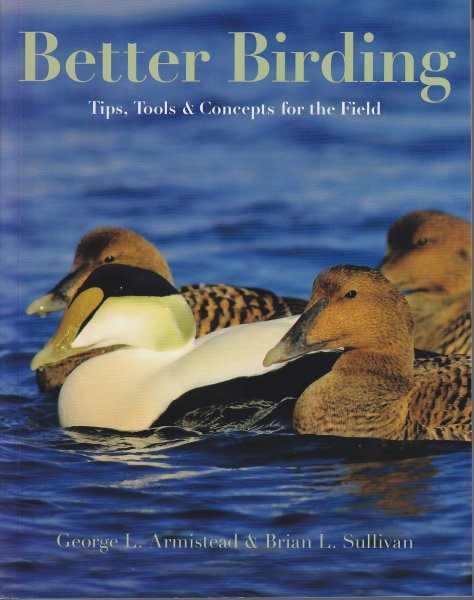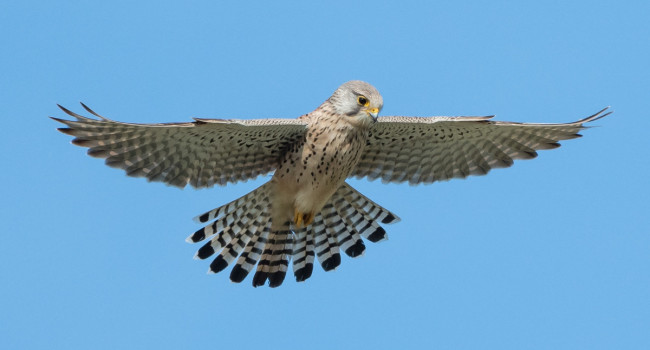
Publisher: Princeton University Press, Princeton and Oxford
Publication Year: 2015
Binding: 1
Page Count: 318
ISBN Number: 9780691129662
Price: £19.95
Better Birding: Tips, Tools and Concepts for the Field
Billed as tips, tools and concepts for the field, Better Birding is packed with information to help the reader improve their identification of North American birds. After a fairly brief introduction, centred on ‘wide-angle birding’ and ‘becoming a “good birder”’, the bulk of the book comprises nine chapters offering thorough treatment of ‘difficult’ groups. The format has many parallels with ground-breaking Macmillan Field Guide to Bird Identification (Harris, Tucker and Vinicombe, 1989). However, rather than being organised taxonomically, species are grouped broadly by habitat and habit: waterbirds, coastal birds, seabirds, large shorebirds, skulkers, birds of forest and edge, aerial insectivores, night birds and open-country birds. The detailed text is supported and enhanced by many well-chosen and often spectacular images.
Characterising Better Birding is a tough task. Weighing in 25 percent heavier than the Collins Bird Guide, with dimensions nearly as wide as a sheet of A4 paper and as tall as a Helm Identification Guide, this meaty paperback is no field guide. The book’s primary goal of helping the reader develop a solid foundation for building field skills may suggest that the target audience is the less experienced birdwatcher. However, delving into any chapter, the comprehensive text seems better suited to readers at the more experienced end of the spectrum. The ‘Focus on’ and bulleted ‘Hints and considerations’ features provide easily-digestible pointers and the ‘Natural History Notes’ add another valuable dimension. However, the accessibility of the unquestionably rich information is, in my view, somewhat compromised by the layout of the species identification accounts. These tend towards unbroken blocks of text and do not always follow a consistent pattern, sometimes starting with size and structure, at other times status and distribution. Although the within-text referencing may be distracting for readers not used to digesting scientific papers – for example, “Eiders hybridize only exceptionally, 2, 4 5, 6 so hybrids do not confound identification” – the comprehensive reference list at the end of each chapter is a useful resource.
Having run ‘Better birding?’ workshops in which participants self-evaluate several birding ‘skill areas’ then target ones to improve, I was surprised that the topics covered in the introduction didn’t receive more attention. To me, this resulted in some missed opportunities. One such was in the brief coverage of online recording tools, where the personal birding development that can be achieved by collecting complete lists was not explored. Given the many and varied terms for different stages of moult (or ‘molt’) that the authors go on to employ, it was also surprising to see this topic afforded little more than a page – including a half-page photograph – of rather superficial treatment in the introduction.
Stunning photographs illustrate the species accounts, the Le Conte’s Sparrow portrait on page 174 being one of a number of stand-outs. The inclusion of composite photographic plates, as popularised by The Crossley ID Guide series, and exclusively depicting birds in flight, are a valuable addition to the identification chapters. The film-reel layout of most of the remaining images works very well in the main, though it does render some pages a little cluttered. Over-cropped images are a personal bug-bear – thankfully these are mostly avoided; the brown eiders on page 86 being one of relatively few unwelcome exceptions. The photo captions are very informative but readability might have benefitted from putting photographer initials and location abbreviations elsewhere, “Probable second-cycle white-morph Red-footed Booby, HI, Mar (TB) (left)” being a typical example.
In the Western Palearctic, the bar for books that develop identification skills has been set incredibly high over the years, and recently raised further by the Birding Frontiers Challenge Series. While I did not find the information in this comparable North American offering quite as accessible, and it lacks the added dimension of hand-drawn illustrations, the attention to detail and alternative perspectives it offers make Better Birding a worthy addition to the library of anyone keen to improve their North American bird identification skills.
Book reviewed by Nick Moran
Buy this book




Share this page